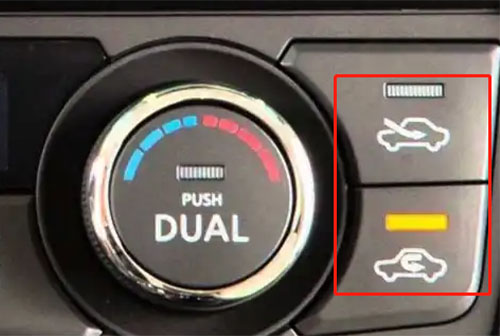Release Date : 2024-07-12
When consumers are purchasing a car, their primary concern is undoubtedly practicality!
As more people are opting for new energy vehicles as their preferred choice, they encounter new dilemmas in their decision-making process. For instance, when purchasing traditional fuel vehicles, they might debate between manual and automatic transmissions, or naturally aspirated and turbocharged engines. Similarly, with the rise of new energy vehicles, buyers now face new choices. For example, pure electric vehicles alleviate concerns about range anxiety, whereas hybrid and extended-range models introduce new considerations.
.jpg)
To begin with, let's delve into the technical distinctions between "hybrid" and "extended range":
In today's market, the majority of hybrid models utilize plug-in hybrid technology, which has gained favor among consumers for its ability to operate on both gasoline and electric power without range anxiety. From a technical standpoint, these hybrids are categorized into series hybrids, parallel hybrids, and hybrids with both series and parallel capabilities.
.jpg)
Among these, "parallel hybrid technology" typically integrates a trio of electrical systems into traditional fuel vehicle technology, enabling both the engine and electric motor to power the wheels simultaneously. The single motor charges the electric system while propelling the vehicle and replenishes the generator when not actively driving. Generally, the engine serves as the primary power source with the electric motor providing supplementary power. On the other hand, "series hybrid" setups allow either the electric motor or the engine to independently propel the vehicle, with the motor taking the lead and the engine acting as a backup, enhanced by an independent generator for superior fuel efficiency and power output compared to parallel hybrids.
.jpg)
When considering "series hybrid" vehicles, they rely solely on a generator to propel the vehicle, with the engine dedicated to generating electricity. Consequently, their efficiency in converting fuel to electricity is relatively poor, leading to higher fuel consumption during operation. This setup might ring a bell for many consumers familiar with the popular extended-range models of recent years. Indeed, "series hybrid" technology is also known as "extended-range electric", making it a specific branch within hybrid technology.
.jpg)
Given that "hybrid" and "extended-range" are essentially the same technically, it's crucial not to dismiss either option when making a car purchase decision. Instead, the choice should align with your specific driving needs and habits. For instance, for budget-conscious consumers with limited access to charging stations or frequent driving needs, a plug-in hybrid model is ideal. Many leading domestic automakers like BYD offer excellent options in this category, which balance convenience and fuel efficiency.
On the other hand, extended-range models cater more to consumers who primarily drive within a fixed range or urban settings, rarely utilizing the extended range capabilities for long trips. While these vehicles can operate purely on electricity with the advantage of a backup fuel tank, their fuel consumption can be high when using the internal combustion engine. Leapmotor stands out in this segment for offering competitive pricing and features tailored to urban family use.
.jpg)
With technological advancements and evolving consumer demands, hybrid technology has evolved significantly without being confined to a single approach. Take BYD's DM technology as a case in point, which has undergone five iterations to meet varying requirements. The first generation utilized a dual-motor series-parallel architecture, followed by a multi-speed DCT parallel architecture in the second generation, and a multi-speed DCT hybrid architecture in the third. The fourth generation reverted to a dual-motor series-parallel setup, and the latest fifth-generation DM technology builds upon improvements from its predecessor.
.jpg)
In simpler terms, as consumers increasingly desire both the electric driving experience and the practicality of plug-in hybrids, automakers are enhancing hybrid models by integrating larger fuel tanks and batteries. By continuously refining the efficiency of converting kinetic energy between oil and electricity, hybrid vehicles now offer comparable driving experiences and costs to pure electric vehicles. They also provide extended driving ranges and the capability to charge while in motion, combining the strengths of hybrid branches such as extended range and plug-in hybrids. This approach aligns closely with the driving habits of Chinese consumers and exemplifies the essence of BYD's fifth-generation DM technology, which deeply understands user preferences.
.jpg)
Undoubtedly, China's new energy vehicle development trend involves continuously adjusting the energy mix to meet user needs. From initially breaking the foreign monopoly on fuel to the current dominance of electric vehicles supported by oil, the industry is now moving towards electricity-centric models supplemented by oil. Even with anticipated revolutionary advancements in battery technology, for consumers prioritizing reliability and assurance, hybrid vehicles remain the optimal choice for future transportation, ensuring peace of mind and practicality in everyday use.

.jpg)
.jpg)
.jpg)
.jpg)
.jpg)
.jpg)
.jpg)

.jpg)





.jpg)




